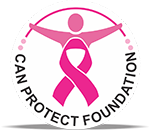The most common symptom of breast cancer is a new lump or mass. A painless, hard mass that has irregular edges is more likely to be cancerous, but breast cancers can also be tender, soft, or rounded. It is important to have any new breast mass or lump or breast change checked by a medical professional experienced in diagnosing breast diseases.
Other possible symptoms of breast cancer include:
- Abnormal screening mammogram with no physical symptoms
- Breast or nipple pain
- Changes in touch (breast may feel hard, tender or warm)
- Change in the size, shape or appearance of a breast
- Nipple discharge (other than breast milk)
- Nipple inversion (turning inward)
- Nipple rash which scabs and bleeds
- Redness, scaliness, or thickening of the nipple or breast skin
- Skin irritation or dimpling
- Swelling of all or part of a breast (even if no distinct lump is felt)
Sometimes breast cancer can spread to lymph nodes under the arm or around the collar bone and cause a lump or swelling there, even before the original tumor in the breast tissue is large enough to be felt. By performing monthly breast self-exams and getting annual mammograms starting at the age of 40, you will be able to more easily identify any changes in your breasts.
The presence of any of these signs and symptoms does not automatically mean you have breast cancer. Any time an abnormality is discovered, it should be investigated by your doctor.
